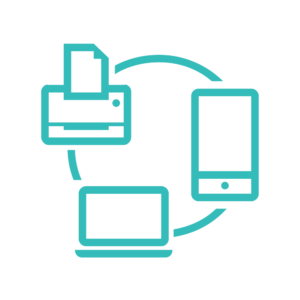“It’s not enough anymore to understand your customers’ needs and recommend a product or service. In today’s market, people expect you to understand their industry, their job in the company, the market conditions, and to come with great ideas to help them drive revenue, increase margins and decrease overall cost.”
This was how Barb Pellow, InfoTrends Group Director, kicked off a discussion on “Understanding Customer Needs,” in the 2016 Xerox Business Development Webinar Series. She was joined by two print and marketing services providers who are experts in their markets. Patrick Maurer is president, Arden Hills, Minn.-based APEX Revenue Technologies, which gets 85 percent of its business from 300 customers in healthcare. And Brian Greenspan is president, Toronto-based WAM Interactive Information Inc., which targets marketers in multiple industries.
Both distinguished themselves earlier this year by winning Xerox Best of the Best Awards for the applications they described in the webinar.
A Better Healthcare Services Invoice
 Recent changes in U.S. healthcare stemming from the Affordable Care Act have contributed to a 68 percent increase in out-of-pocket costs for individual patients since 2009—and less predictable cash flow for healthcare providers. Payments are delayed because patients question a statement’s accuracy, are confused by their bill’s presentation, or are surprised by their high out-of-pocket costs. Forty-one percent of patients have trouble paying their bills, Maurer said.
Recent changes in U.S. healthcare stemming from the Affordable Care Act have contributed to a 68 percent increase in out-of-pocket costs for individual patients since 2009—and less predictable cash flow for healthcare providers. Payments are delayed because patients question a statement’s accuracy, are confused by their bill’s presentation, or are surprised by their high out-of-pocket costs. Forty-one percent of patients have trouble paying their bills, Maurer said.
Healthcare providers typically respond to non-payers by sending the same bill four times, then turning to a collections agency. On average, agencies collect on just 15 percent of bills they pursue, and 15 percent of overall healthcare billings eventually are written off as bad debt or charity care.
APEX improves on this approach by using its own dynamic communications and analytics system, Apex Connect, to “understand the patients to the same extent you’d understand their health needs,” Maurer said. Data from patient files, financial and demographic databases and other sources helps APEX segment patients into various personas. Discussions with providers help APEX define desired outcomes, such as improving the likelihood patients will pay, or increasing use of online paying or payment plans. APEX then develops content for its platform’s messaging library and pulls from it dynamically in production to drive desired actions.
Maurer described a successful campaign for a Chicago-based healthcare company using 30 different variable campaigns. Results included $12 million in additional cash collected, a 4 percent increase in first-cycle payments, a 17 percent increase in use of payment financing plans, and a 16.4 percent reduction in bad debt for balances of $250 or less, generating $1.7 million in revenue.
“As a printer, a lot of the times we’re tasked to print cheaper,” Maurer said. “Compare taking a penny off the cost of a statement to giving the customer better messaging that can result in $12 million of additional revenue.”
Keeping in Touch With Customers
WAM takes a slightly different path to generate similar successes. The company began life in 1994 as a marketing firm and added printing services 10 years ago, blending the strengths of agencies and printers to focus on one-to-one marketing. “Typically agencies don’t understand variable data, printers don’t care what’s designed on the sheet, and clients hesitate because variable data is usually a one-off project that is expensive and resource-intensive,” Greenspan said.
For years WAM succeeded by working with Fortune 500 companies, then sought to grow by scaling an affordable one-to-one marketing program for sales agents and professionals in smaller companies. This led them to create the KiTS Keep-in-Touch customer relationship management (CRM) system, a drip marketing campaign and integrated white-label CRM solution that uses a variety of communications vehicles to build mindshare and sales.
WAM manages the entire process from concept to mail with a staff that performs writing, design, data management, programming, proofing, production printing, binding and mailing. Programs can be deeply complex. One real estate company program comprehends 18 overarching brands, 310 company franchises, 632 personal brands, as well as the characteristics of each recipient.
Results have been stellar. Return on investment for a single real estate deal easily surpasses 100 percent in most cases—enough to pay for multiple years of program costs. And most agents register multiple sales from KiTS each year to achieve results not common to most marketing programs.
WAM also uses KiTS for its own self-promotion, driving new subscription growth of 13.5 percent for an ROI of nearly 380 percent, and among responders, the buy ratio was about 65 percent. The platform has enabled WAM to transform “from serving a small group of massive clients to growing a business with a new base of thousands of clients,” Greenspan said.
For More
To hear a replay of the webinar, click here. Also, don’t miss the replay of another great webinar in our Xerox Business Development Series, “How Price Anchoring Makes Customers Pay More for Print Services”.
What are you doing to better understand your customers?



